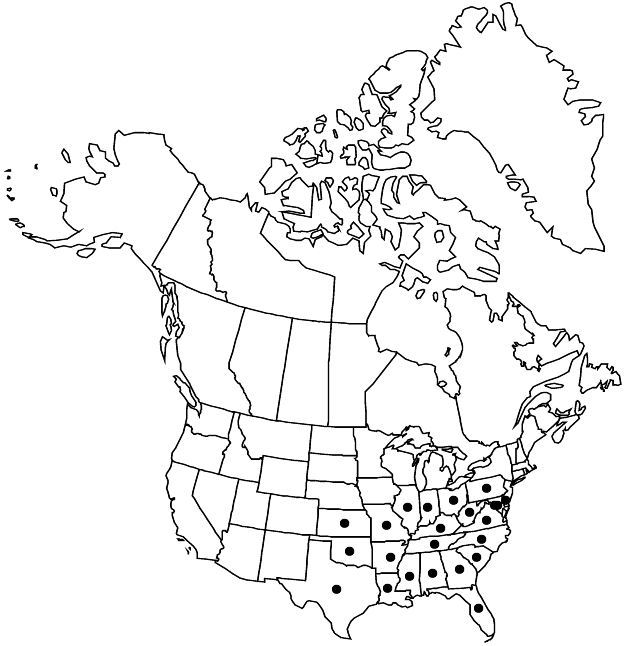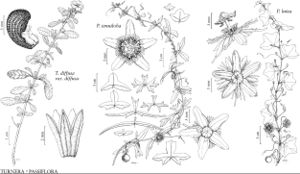Difference between revisions of "Passiflora lutea"
Sp. Pl. 2: 958. 1753.
FNA>Volume Importer |
imported>Volume Importer |
||
| (2 intermediate revisions by 2 users not shown) | |||
| Line 60: | Line 60: | ||
|publication year=1753 | |publication year=1753 | ||
|special status=Endemic;Illustrated;Weedy | |special status=Endemic;Illustrated;Weedy | ||
| − | |source xml=https:// | + | |source xml=https://bitbucket.org/aafc-mbb/fna-data-curation/src/2e0870ddd59836b60bcf96646a41e87ea5a5943a/coarse_grained_fna_xml/V6/V6_326.xml |
|genus=Passiflora | |genus=Passiflora | ||
|species=Passiflora lutea | |species=Passiflora lutea | ||
Latest revision as of 22:20, 5 November 2020
Stems terete to subangular, glabrous or sparsely hairy, sometimes densely hairy when young, (above-ground stems annual). Leaves not pungent, glabrous or minutely hairy; stipules linear-lanceolate, falcate, 2–5 × 0.5–1 mm, eglandular; petiole eglandular; blade roughly symmetric, 2–10(–15) × 1–8(–12) cm shallowly to rarely deeply 3(–5)-lobed, middle lobe slightly shorter to longer than lateral lobes (1/3–2/3 blade length), margins entire; abaxial fine veins prominently raised (especially in dried specimens), abaxial nectaries absent. Floral bracts absent. Flowers: floral tube absent; sepals green, 6–10 × 2–3 mm; petals pale green-yellow, 3–7 × 1 mm; corona filament whorls 2, outer filaments pale green to white basally, pale yellow apically, linear, terete, 5–10 mm. Berries purple-black, globose to ovoid, 8–15 × 8–15 mm. 2n = 24, 84.
Phenology: Flowering (Mar–)Jun–Sep(–Oct).
Habitat: Mesic, open woodlands and forest margins, 0–600(–1100) m
Distribution

Ala., Ark., Del., D.C., Fla., Ga., Ill., Ind., Kans., Ky., La., Md., Miss., Mo., N.C., Ohio, Okla., Pa., S.C., Tenn., Tex., Va., W.Va.
Discussion
Perhaps the most widespread species of the genus endemic in the flora area, Passiflora lutea is probably becoming rarer at its geographic limits because of habitat loss. It is absent from southernmost Texas, and is therefore not sympatric with the similar P. filipes.
Passiflora lutea is our only native species, and one of very few in the genus, that has hypogeal seed germination. It is also extensively rhizomatous, forming rhizomes even as small seedlings. Very cold-hardy, it is able to thrive in cultivation far north of its natural range. The plants are shade-tolerant, but those growing in the open can occasionally form dense masses. The leaves often turn bright yellow in autumn.
Selected References
None.
